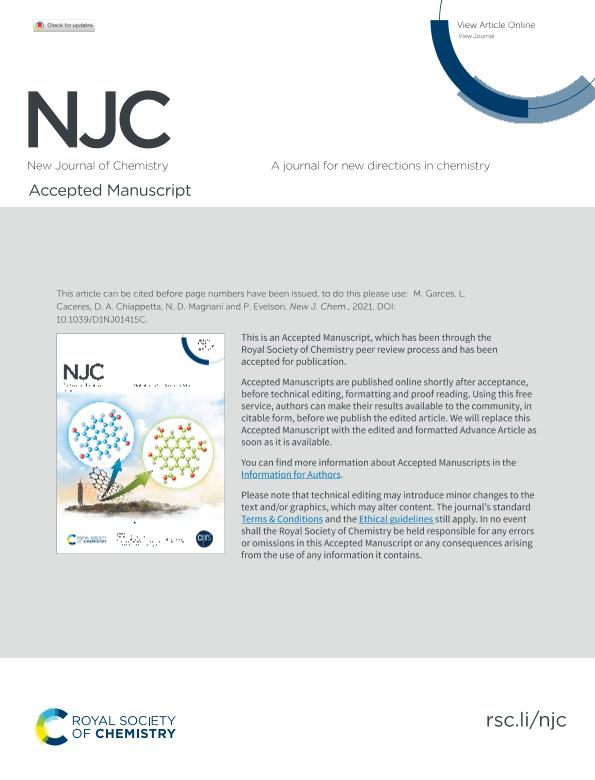Artículo
Current understanding of nanoparticle toxicity mechanisms and interactions with biological systems
Garces, Mariana Soledad ; Caceres, Lourdes Catalina; Chiappetta, Diego Andrés
; Caceres, Lourdes Catalina; Chiappetta, Diego Andrés ; Magnani, Natalia Daniela
; Magnani, Natalia Daniela ; Evelson, Pablo Andrés
; Evelson, Pablo Andrés
 ; Caceres, Lourdes Catalina; Chiappetta, Diego Andrés
; Caceres, Lourdes Catalina; Chiappetta, Diego Andrés ; Magnani, Natalia Daniela
; Magnani, Natalia Daniela ; Evelson, Pablo Andrés
; Evelson, Pablo Andrés
Fecha de publicación:
08/2021
Editorial:
Royal Society of Chemistry
Revista:
New Journal of Chemistry
ISSN:
1144-0546
Idioma:
Inglés
Tipo de recurso:
Artículo publicado
Clasificación temática:
Resumen
Nanotechnology is an emerging science involving the manipulation of matter at the nanometer scale. Nanoparticles (NP) are engineered structures with at least one dimension of 100 nm or less. These materials are progressively being used for commercial purposes and being incorporated into everyday manufactured articles at an increasing rate. These products include consumer items such as pharmaceuticals, cosmetics, food, food packaging, and household products, among others. The same unique physical and chemical properties that make NP so attractive may be associated with their potentially hazardous effects on cells and tissues. Despite the large benefit ensured from the application of nanotechnology, many issues related to NP behavior and adverse effects are not fully understood or should be examined anew. The traditional hypothesis that NP exhibit different or additional hazards due to their ?nano? size has been challenged in recent years, and NP categorization according to their properties and toxicity mechanism has been proposed instead. Possible undesirable results of these capabilities are harmful interactions with biological systems and the environment, with the potential to generate toxicity. Both in vivo and in vitro studies have shown that NP are closely associated with toxicity by increasing intracellular reactive oxygen species (ROS) levels, and/or the levels of pro-inflammatory mediators. This review summarizes available data on NP toxicity in biological systems, with particular focus on oxidative stress and inflammation as the main mechanisms that lead to adverse health effects following NP exposure.
Palabras clave:
NANOTOXICOLOGY
,
REACTIVE OXYGEN SPECIES
,
OXIDATIVE STRESS
,
INFLAMMATION
Archivos asociados
Licencia
Identificadores
Colecciones
Articulos(IBIMOL)
Articulos de INSTITUTO DE BIOQUIMICA Y MEDICINA MOLECULAR
Articulos de INSTITUTO DE BIOQUIMICA Y MEDICINA MOLECULAR
Citación
Garces, Mariana Soledad; Caceres, Lourdes Catalina; Chiappetta, Diego Andrés; Magnani, Natalia Daniela; Evelson, Pablo Andrés; Current understanding of nanoparticle toxicity mechanisms and interactions with biological systems; Royal Society of Chemistry; New Journal of Chemistry; 45; 32; 8-2021; 14328-14344
Compartir
Altmétricas



